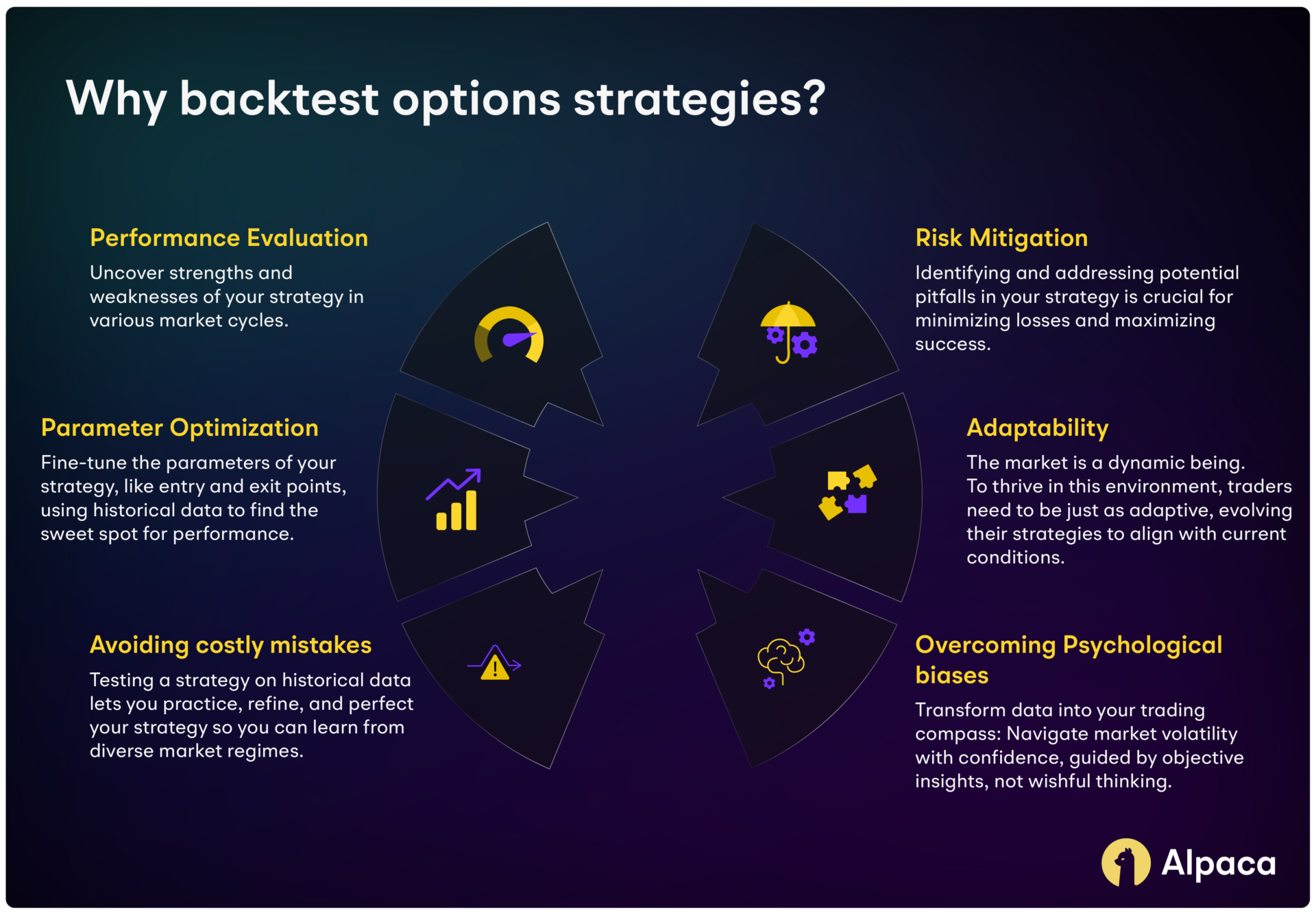Did you know that the first stock market was established in Amsterdam in 1602, where traders could buy shares in the Dutch East India Company—becoming the original day traders? In the realm of modern day trading, historical data plays a critical role in backtesting strategies. This article delves into what historical data is, its significance for validating trading strategies, and the best practices for collecting and interpreting this data. It also highlights potential pitfalls to avoid, the impact of data quality, and how market conditions can influence your analysis. Plus, discover the right tools for analyzing historical data and how to effectively integrate it into your trading approach. Let DayTradingBusiness guide you through enhancing your trading strategy's accuracy with valuable insights into historical data.
What is historical data in day trading backtesting?
Historical data in day trading backtesting refers to past price movements, volume, and other market metrics used to evaluate the performance of trading strategies. It helps traders simulate trades as if they were executed in real-time, allowing them to assess the strategy's effectiveness, risk, and potential profitability. This data enables traders to refine their approaches based on actual market behavior, identify patterns, and make informed decisions for future trades.
Why is historical data important for backtesting trading strategies?
Historical data is crucial for backtesting trading strategies because it allows traders to evaluate how a strategy would have performed in the past under various market conditions. This data helps identify potential weaknesses, refine entry and exit points, and optimize risk management. By analyzing historical price movements, traders can gain insights into the strategy's effectiveness and increase confidence before risking real capital. Additionally, historical data can reveal patterns and trends that are vital for developing successful day trading strategies.
How do you collect historical data for day trading?
To collect historical data for day trading, start by choosing a reliable data provider like Yahoo Finance, Quandl, or your brokerage platform. Download historical price data, including open, high, low, close, and volume for the assets you trade. Use APIs or CSV files for easy access. Make sure the data covers a sufficient time frame, ideally several years, to ensure robust backtesting. Clean and organize the data in a spreadsheet or trading software to facilitate analysis.
What types of historical data are most useful for backtesting?
The most useful types of historical data for backtesting in day trading include:
1. Price Data: Open, high, low, and close prices for the assets you're trading.
2. Volume Data: Trading volumes provide insights into market activity and liquidity.
3. Time Series Data: Tick data or minute-by-minute price changes help capture short-term price movements.
4. Order Book Data: Depth of market data reveals buy and sell orders which can indicate market sentiment.
5. Economic Indicators: Data like interest rates, unemployment rates, or GDP can impact market trends.
6. Market Sentiment Data: News and social media sentiment can influence price action and volatility.
Using a combination of these data types enhances the effectiveness of your backtesting strategy.
How can historical data improve trading strategy accuracy?
Historical data enhances trading strategy accuracy by providing a benchmark for evaluating performance. By analyzing past price movements, traders can identify patterns and trends that inform decision-making. Backtesting strategies against historical data reveals potential strengths and weaknesses, allowing for adjustments before real-time application. This process helps to minimize risks and improve profitability. Additionally, historical data can highlight market conditions that lead to successful trades, enabling traders to refine their strategies based on empirical evidence rather than speculation.
What are common pitfalls in using historical data for backtesting?

Common pitfalls in using historical data for backtesting include overfitting, where a model is too closely tailored to past data and fails in real-time; data mining, which occurs when traders rely on patterns that may be coincidental rather than meaningful; and ignoring market changes, leading to strategies that do not account for evolving conditions. Additionally, using incomplete or inaccurate data can skew results, while relying solely on historical performance can neglect risk management factors. It's crucial to ensure the data is relevant, clean, and representative of current market dynamics.
How do you interpret historical data trends in day trading?
To interpret historical data trends in day trading, start by analyzing price movements over different time frames, such as daily, hourly, or minute charts. Look for patterns like support and resistance levels, moving averages, and volume spikes that indicate potential price action. Use backtesting to apply your trading strategies against historical data to see how they would have performed. Identify recurring trends and signals that preceded profitable trades, and adjust your strategies based on these insights. Always consider market conditions and news events that could influence past trends.
What timeframes should you consider for historical data in backtesting?
When backtesting for day trading, consider these timeframes for historical data:
1. Intraday Data: Use 1-minute to 5-minute charts for precise trade entry and exit analysis.
2. Daily Data: Analyze daily charts to understand broader market trends and patterns.
3. Weekly Data: Incorporate weekly data to identify long-term support and resistance levels.
Aim for at least 1-2 years of historical data to capture various market conditions, but more data may yield better insights. Adjust the timeframe based on your trading strategy and style.
How does data quality impact day trading backtesting results?

Data quality directly affects the accuracy of day trading backtesting results. High-quality, clean, and comprehensive historical data ensures that backtests reflect realistic market conditions, leading to more reliable performance metrics. Poor data, such as inaccuracies or gaps, can skew results, creating false signals or misleading profitability. For effective strategy evaluation, traders must use precise data that includes timestamps, accurate price points, and volume figures. Inaccurate data can result in overfitting strategies to noise rather than true market trends, ultimately undermining trading performance.
What tools are available for analyzing historical data in trading?
For analyzing historical data in trading, key tools include:
1. Trading Platforms: MetaTrader, ThinkorSwim, and NinjaTrader offer built-in backtesting capabilities with access to historical data.
2. Data Analysis Software: Excel and Google Sheets can be used for custom analysis, allowing you to manipulate historical data easily.
3. Backtesting Frameworks: Python libraries like Backtrader and Zipline enable advanced backtesting with historical data.
4. Statistical Software: R and MATLAB provide powerful statistical analysis tools for in-depth data exploration.
5. Database Solutions: SQL databases can store and query large datasets efficiently for historical analysis.
These tools help traders refine strategies by analyzing past market performance.
How can you integrate historical data into a day trading strategy?
To integrate historical data into a day trading strategy, first, collect relevant data like price movements, volume, and volatility. Use this data to backtest your trading strategy by simulating trades based on historical conditions. Analyze patterns and trends to identify profitable opportunities. Adjust your strategy based on backtest results to improve performance. Continuous refinement and comparison against various time frames will enhance your approach. Finally, ensure your strategy adapts to current market conditions while being rooted in historical insights.
Learn about How to Analyze Historical Data Using Day Trading Charts
What role does historical volatility play in backtesting?
Historical volatility is crucial in backtesting as it helps assess the risk and potential price movements of a trading strategy. By analyzing past price fluctuations, traders can determine how a strategy might perform under varying market conditions. High historical volatility may suggest greater risk but also the potential for higher returns, while low volatility indicates steadier price action. Incorporating historical volatility into backtesting allows traders to refine their strategies, improve risk management, and set realistic expectations for future performance.
How do market conditions affect historical data analysis?
Market conditions significantly impact historical data analysis in day trading backtesting by influencing the accuracy and relevance of the data used. For example, a volatile market may produce different price movements compared to a stable one, affecting the performance of trading strategies. If backtesting is done during a bullish phase, a strategy might appear effective, but it could fail in a bearish or sideways market. Analysts must adjust their interpretations of historical data to consider changing conditions, ensuring that backtested strategies remain robust across various market scenarios.
Learn about How Market Conditions Affect HFT Strategies
Can historical data predict future performance in day trading?
Yes, historical data can help predict future performance in day trading through backtesting. By analyzing past price movements, traders can identify patterns and strategies that may be effective. However, while historical trends can provide insights, they are not foolproof due to market volatility and changing conditions.
What are the best practices for backtesting with historical data?
Use high-quality, clean historical data to ensure accuracy. Focus on a representative time frame that includes different market conditions. Implement robust trading strategies with clear entry and exit signals. Avoid overfitting by keeping your model simple and validating it with out-of-sample data. Regularly analyze performance metrics like drawdown and win rate. Incorporate transaction costs and slippage to simulate real trading conditions. Lastly, document your process and findings for future reference and continuous improvement.
How do you update historical data for ongoing backtesting?
To update historical data for ongoing backtesting, follow these steps:
1. Data Acquisition: Regularly download the latest historical data from reliable sources, including price, volume, and any relevant market indicators.
2. Data Cleaning: Ensure the new data is free of errors. Remove duplicates, fill in missing values, and adjust for corporate actions like splits or dividends.
3. Integration: Merge the updated data with your existing dataset, ensuring consistent formatting and alignment.
4. Re-evaluation of Strategies: Run your trading strategies against the updated dataset to assess their performance. Analyze any changes in metrics like win rate and drawdown.
5. Documentation: Keep a record of changes made to the dataset and any adjustments to strategies for transparency and future reference.
6. Automation: Consider automating the data update process with scripts or tools to streamline future updates.
These steps ensure your backtesting reflects the most current market conditions and enhances the reliability of your trading strategies.
Conclusion about The Role of Historical Data in Day Trading Backtesting
Incorporating historical data is crucial for effective day trading backtesting, as it enables traders to refine strategies and improve accuracy. Understanding the nuances of data collection, interpretation, and quality can significantly enhance trading outcomes. By following best practices and leveraging the right tools, traders can harness the power of historical data to adapt to market conditions and optimize their strategies. For ongoing support and insights into trading effectively, consider exploring the resources offered by DayTradingBusiness.
Learn about How to Analyze Historical Data Using Day Trading Charts